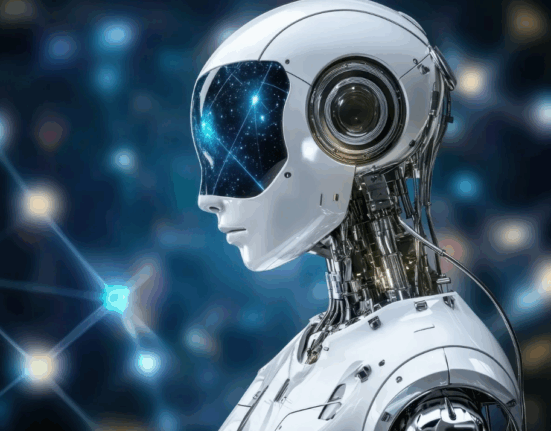The world is at a critical turning point where technology and environmental responsibility must work hand in hand. As climate change, pollution, and resource scarcity continue to threaten ecosystems, a growing number of industries are looking toward machine learning sustainability as a guiding light for innovation. But how exactly can algorithms help us create a greener, more efficient planet?
The answer lies in the power of data. Machine learning (ML), a subset of artificial intelligence, allows systems to learn from information, predict outcomes, and make decisions with minimal human intervention. When applied to sustainability, it transforms raw data into insights that help reduce waste, lower emissions, and enhance efficiency across energy, agriculture, transportation, and manufacturing.
Let’s explore how machine learning is fueling sustainable innovation and why it’s becoming one of the most powerful allies in our global pursuit of a cleaner future.
The Link Between Machine Learning and Sustainability
To understand machine learning sustainability, it’s helpful to think about how technology learns from data patterns to improve decision-making. Every day, billions of data points are generated from sensors, satellites, and digital systems. Machine learning takes these massive datasets and finds actionable insights that humans might miss.
For sustainability efforts, these insights can mean predicting when equipment will fail, optimizing energy use in factories, or identifying deforestation patterns from satellite images. Because ML systems adapt over time, they become more efficient and accurate, leading to long-term environmental and economic benefits.
Moreover, as organizations face stricter environmental regulations, adopting ML-driven sustainability models helps them meet targets while staying competitive. It’s no longer just about compliance—it’s about transformation.
Energy Efficiency Through Machine Learning
One of the most promising uses of machine learning sustainability is in energy management. From power grids to personal homes, ML algorithms can analyze consumption patterns, forecast demand, and detect inefficiencies.
For example, smart grids use ML to balance supply and demand in real time. They can predict when renewable sources like solar or wind will generate more power and adjust energy distribution accordingly. This prevents overproduction, cuts down on energy waste, and reduces reliance on fossil fuels.
In homes and offices, smart thermostats powered by ML learn user behavior and automatically adjust heating and cooling systems to save energy. Over time, these adjustments significantly reduce carbon emissions while maintaining comfort.
Transitioning to machine learning-based systems in the energy sector is one of the clearest pathways to achieving global sustainability goals.
Reducing Industrial Waste with Predictive Analytics
Factories and industrial plants are among the largest contributors to environmental waste. Yet with machine learning sustainability solutions, manufacturers can turn this challenge into an opportunity for smarter production.
Predictive maintenance powered by ML analyzes equipment performance data to anticipate breakdowns before they happen. This proactive approach reduces downtime, prevents unnecessary waste, and saves energy. Imagine a production line that can detect when a motor is starting to fail and replace it before it causes inefficiency—that’s the power of predictive analytics in action.
In addition, ML algorithms optimize supply chains by predicting material needs, minimizing overproduction, and identifying the most sustainable sources for raw materials. These improvements not only reduce waste but also enhance profitability—a win-win for both business and the planet.
Machine Learning in Sustainable Agriculture
Feeding the world sustainably is one of humanity’s greatest challenges, and machine learning sustainability plays a vital role in achieving this goal.
Farmers now use ML-driven systems to analyze soil health, predict weather patterns, and monitor crop conditions through satellite imagery and drones. By combining these data points, farmers can make precise decisions about irrigation, fertilizer use, and pest control—reducing both waste and environmental impact.
For example, ML can determine the exact amount of water a field needs, conserving water resources while maintaining crop yield. Similarly, image recognition algorithms detect early signs of disease or pests, allowing farmers to take targeted action rather than spraying entire fields.
This precision agriculture model not only reduces the ecological footprint but also ensures food security for growing populations.
Cleaner Transportation Through Smart Systems
Transportation accounts for a major share of global greenhouse gas emissions. Fortunately, machine learning sustainability is reshaping how we move people and goods around the planet.
From route optimization to predictive traffic control, ML systems are helping cities and logistics companies minimize fuel consumption and emissions. Self-driving cars and autonomous delivery drones, powered by real-time learning models, further improve efficiency by avoiding congestion and unnecessary idling.
In public transport, ML algorithms optimize schedules based on commuter demand, ensuring buses and trains run more efficiently. Similarly, electric vehicle (EV) manufacturers use ML to improve battery performance, predict maintenance needs, and optimize charging infrastructure.
Every smarter decision made through data brings us closer to a future where travel is cleaner, faster, and more sustainable.
Environmental Protection and Climate Modeling
Perhaps the most exciting contribution of machine learning sustainability lies in environmental research. Climate scientists use ML models to process vast amounts of atmospheric and oceanic data to better understand climate change dynamics.
For instance, ML algorithms analyze satellite images to detect illegal logging, pollution spread, and habitat destruction in real time. This allows governments and environmental organizations to respond quickly and efficiently.
Additionally, machine learning helps improve weather prediction accuracy, which is crucial for disaster preparedness and resource management. By simulating complex environmental interactions, ML enables scientists to anticipate extreme events like hurricanes, droughts, or floods earlier than ever before.
Such innovations give humanity a fighting chance to mitigate the worst effects of climate change.
Corporate Sustainability and Smart Resource Management
Businesses are increasingly under pressure to adopt sustainable practices, and machine learning sustainability provides the analytical backbone to achieve them.
Companies now use ML-driven analytics to monitor carbon footprints, optimize logistics, and track sustainability metrics in real time. For example, a retailer might use ML to forecast inventory needs, reducing overstock and minimizing waste from unsold products.
Machine learning also assists in resource allocation—determining how to best use materials, energy, and time for maximum output with minimal waste. In the long run, organizations that embrace these tools not only reduce operational costs but also strengthen their brand reputation as leaders in sustainability.
The Role of Artificial Intelligence Ethics in Sustainability
As ML grows more powerful, ethical considerations become essential. Ensuring that machine learning sustainability initiatives are transparent, fair, and inclusive helps maintain public trust and social responsibility.
Algorithms must be trained on diverse and accurate data to avoid bias in decision-making. For instance, sustainability projects in developing regions must consider local environmental and economic conditions to create fair and practical solutions.
Ethical AI practices also demand energy-efficient computing. Training large ML models consumes significant power, so researchers are now exploring “green AI” approaches—optimizing algorithms to use less energy without sacrificing performance.
Ultimately, ethical and sustainable AI go hand in hand.
Challenges to Overcome
Despite its potential, achieving full machine learning sustainability faces some hurdles.
First, access to quality data remains a challenge, especially in developing nations. Without accurate datasets, ML predictions can become unreliable. Second, implementing ML solutions requires investment in infrastructure and skilled personnel, which can be a barrier for smaller organizations.
Another concern is energy consumption in large-scale ML training. While ML helps optimize energy use in other sectors, its own operations must also become more efficient. Researchers are developing new models and hardware to address this issue.
Overcoming these challenges will require collaboration between governments, researchers, and businesses.
The Future of Machine Learning Sustainability
The potential of machine learning sustainability is just beginning to unfold. In the coming years, we can expect even greater integration between AI technologies and sustainable systems.
For example, digital twins—virtual replicas of physical systems—will use ML to simulate and optimize energy use in buildings, factories, and cities. Machine learning will also accelerate carbon capture technologies, monitor biodiversity, and even design new sustainable materials at the molecular level.
The ultimate goal is clear: create self-optimizing systems that continuously learn how to minimize environmental impact while maximizing human progress.
Conclusion
The fusion of technology and environmental responsibility has never been more vital. Machine learning sustainability is more than a trend—it’s the cornerstone of innovation for a greener, smarter, and more resilient world.
By transforming data into action, machine learning empowers industries to reduce waste, optimize resources, and protect the environment. As algorithms evolve and awareness grows, the line between technology and sustainability will blur—ushering in a future where progress and preservation walk hand in hand.
FAQ
1. What is machine learning sustainability?
Machine learning sustainability refers to using data-driven algorithms to create environmentally efficient systems that reduce waste and optimize energy use.
2. How does machine learning help in energy conservation?
Machine learning helps monitor and predict energy demand, optimize grid operations, and improve efficiency in both industrial and residential environments.
3. Can machine learning improve agriculture sustainability?
Yes. It enables precision farming by analyzing soil, weather, and crop data, helping farmers use fewer resources while maintaining productivity.
4. What industries benefit most from machine learning sustainability?
Energy, agriculture, manufacturing, and transportation are leading sectors adopting machine learning for sustainability-focused innovation.
5. What is the future of machine learning in sustainability?
The future involves smarter, self-optimizing systems that integrate machine learning with renewable energy, climate modeling, and sustainable production methods worldwide.








